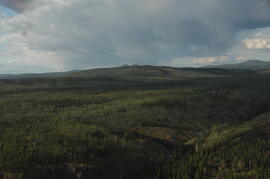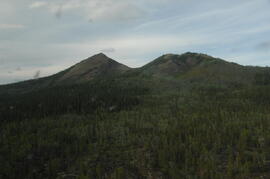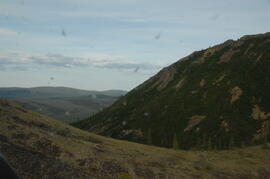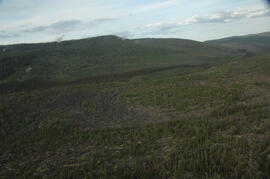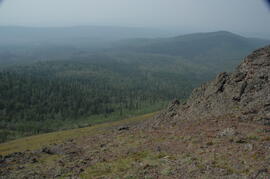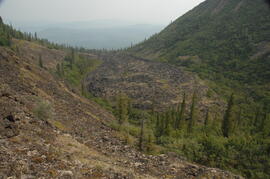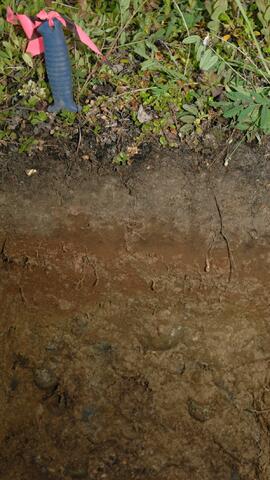This image appears as Figure 9 in the publication:
Sanborn, P., 2010. Soil reconnaissance of the Fort Selkirk volcanic field, Yukon (115I/13 and 14).
In: Yukon Exploration and Geology 2009, K.E. MacFarlane, L.H. Weston and L.R. Blackburn
(eds.), Yukon Geological Survey, Whitehorse, Yukon. pp. 293-304. https://emrlibrary.gov.yk.ca/ygs/yeg/2009/2009_p293-304.pdf
2023.2.2.7.4.106
·
Item
·
2009
Part of Dr. Paul Sanborn fonds
2023.2.2.7.4.113
·
Item
·
2009
Part of Dr. Paul Sanborn fonds
2023.2.2.7.4.116
·
Item
·
2009
Part of Dr. Paul Sanborn fonds
2023.2.2.7.4.120
·
Item
·
2009
Part of Dr. Paul Sanborn fonds
2023.2.2.7.4.004
·
Item
·
2009
Part of Dr. Paul Sanborn fonds
2023.2.2.7.4.005
·
Item
·
2009
Part of Dr. Paul Sanborn fonds
2023.2.2.7.4.007
·
Item
·
2009
Part of Dr. Paul Sanborn fonds
2023.2.2.7.4.009
·
Item
·
2009
Part of Dr. Paul Sanborn fonds
2023.2.2.7.4.011
·
Item
·
2009
Part of Dr. Paul Sanborn fonds
2023.2.2.7.4.012
·
Item
·
2009
Part of Dr. Paul Sanborn fonds
2023.2.2.7.4.014
·
Item
·
2009
Part of Dr. Paul Sanborn fonds
2023.2.2.7.4.016
·
Item
·
2009
Part of Dr. Paul Sanborn fonds
2023.2.2.7.4.020
·
Item
·
2009
Part of Dr. Paul Sanborn fonds
2023.2.2.7.4.028
·
Item
·
2009
Part of Dr. Paul Sanborn fonds
2023.2.2.7.4.035
·
Item
·
2009
Part of Dr. Paul Sanborn fonds
2023.2.2.7.4.037
·
Item
·
2009
Part of Dr. Paul Sanborn fonds
2023.2.2.7.4.038
·
Item
·
2009
Part of Dr. Paul Sanborn fonds
2023.2.2.7.4.039
·
Item
·
2009
Part of Dr. Paul Sanborn fonds
2023.2.2.7.4.040
·
Item
·
2009
Part of Dr. Paul Sanborn fonds
2023.2.2.7.4.041
·
Item
·
2009
Part of Dr. Paul Sanborn fonds
2023.2.2.7.4.043
·
Item
·
2009
Part of Dr. Paul Sanborn fonds
2023.2.2.7.4.045
·
Item
·
2009
Part of Dr. Paul Sanborn fonds
2023.2.2.7.4.049
·
Item
·
2009
Part of Dr. Paul Sanborn fonds
2023.2.2.7.4.055
·
Item
·
2009
Part of Dr. Paul Sanborn fonds
2023.2.2.7.4.063
·
Item
·
2009
Part of Dr. Paul Sanborn fonds
2023.2.2.7.4.064
·
Item
·
2009
Part of Dr. Paul Sanborn fonds
2023.2.2.7.4.065
·
Item
·
2009
Part of Dr. Paul Sanborn fonds
2023.2.2.7.4.069
·
Item
·
2009
Part of Dr. Paul Sanborn fonds
2023.2.2.7.4.070
·
Item
·
2009
Part of Dr. Paul Sanborn fonds
2023.2.2.7.4.071
·
Item
·
2009
Part of Dr. Paul Sanborn fonds
2023.2.2.7.4.072
·
Item
·
2009
Part of Dr. Paul Sanborn fonds
2023.2.2.7.4.073
·
Item
·
2009
Part of Dr. Paul Sanborn fonds
2023.2.2.7.4.078
·
Item
·
2009
Part of Dr. Paul Sanborn fonds
2023.2.2.7.4.084
·
Item
·
2009
Part of Dr. Paul Sanborn fonds
2023.2.2.7.4.085
·
Item
·
2009
Part of Dr. Paul Sanborn fonds
2023.2.2.7.4.097
·
Item
·
2009
Part of Dr. Paul Sanborn fonds
2023.2.2.7.4.101
·
Item
·
2009
Part of Dr. Paul Sanborn fonds
2023.2.2.7.4.103
·
Item
·
2009
Part of Dr. Paul Sanborn fonds
2023.2.2.7.4.108
·
Item
·
2009
Part of Dr. Paul Sanborn fonds
2023.2.2.7.4.111
·
Item
·
2009
Part of Dr. Paul Sanborn fonds
2023.2.2.7.4.117
·
Item
·
2009
Part of Dr. Paul Sanborn fonds
2023.2.2.8.05
·
Item
·
Feb. 2009
Part of Dr. Paul Sanborn fonds
This PDF contains site location data, annotated soil profile photographs, and AMS radiocarbon dates for 2008 soil charcoal samples collected at Kluane Lake, Yukon Territory.
2023.2.2.8.20.04
·
Item
·
2009
Part of Dr. Paul Sanborn fonds
Photograph depicts a Kluane Lake transect 1 location.
2023.2.2.8.20.05
·
Item
·
2009
Part of Dr. Paul Sanborn fonds
Photograph depicts a Kluane Lake transect 1 location.
2023.2.2.8.20.09
·
Item
·
2009
Part of Dr. Paul Sanborn fonds
Photograph depicts a Kluane Lake transect 1 location.
2023.2.2.8.20.10
·
Item
·
2009
Part of Dr. Paul Sanborn fonds
Photograph depicts a Kluane Lake transect 1 location.
2023.2.2.8.20.13
·
Item
·
2009
Part of Dr. Paul Sanborn fonds
Photograph depicts a Kluane Lake transect 1 location.
2023.2.2.8.20.19
·
Item
·
2009
Part of Dr. Paul Sanborn fonds
Photograph depicts a Kluane Lake transect 2 location.
2023.2.2.8.20.26
·
Item
·
2009
Part of Dr. Paul Sanborn fonds
Photograph depicts a Kluane Lake transect 2 location.
2023.2.2.8.20.32
·
Item
·
2009
Part of Dr. Paul Sanborn fonds
Photograph depicts a Kluane Lake transect 2 location.





